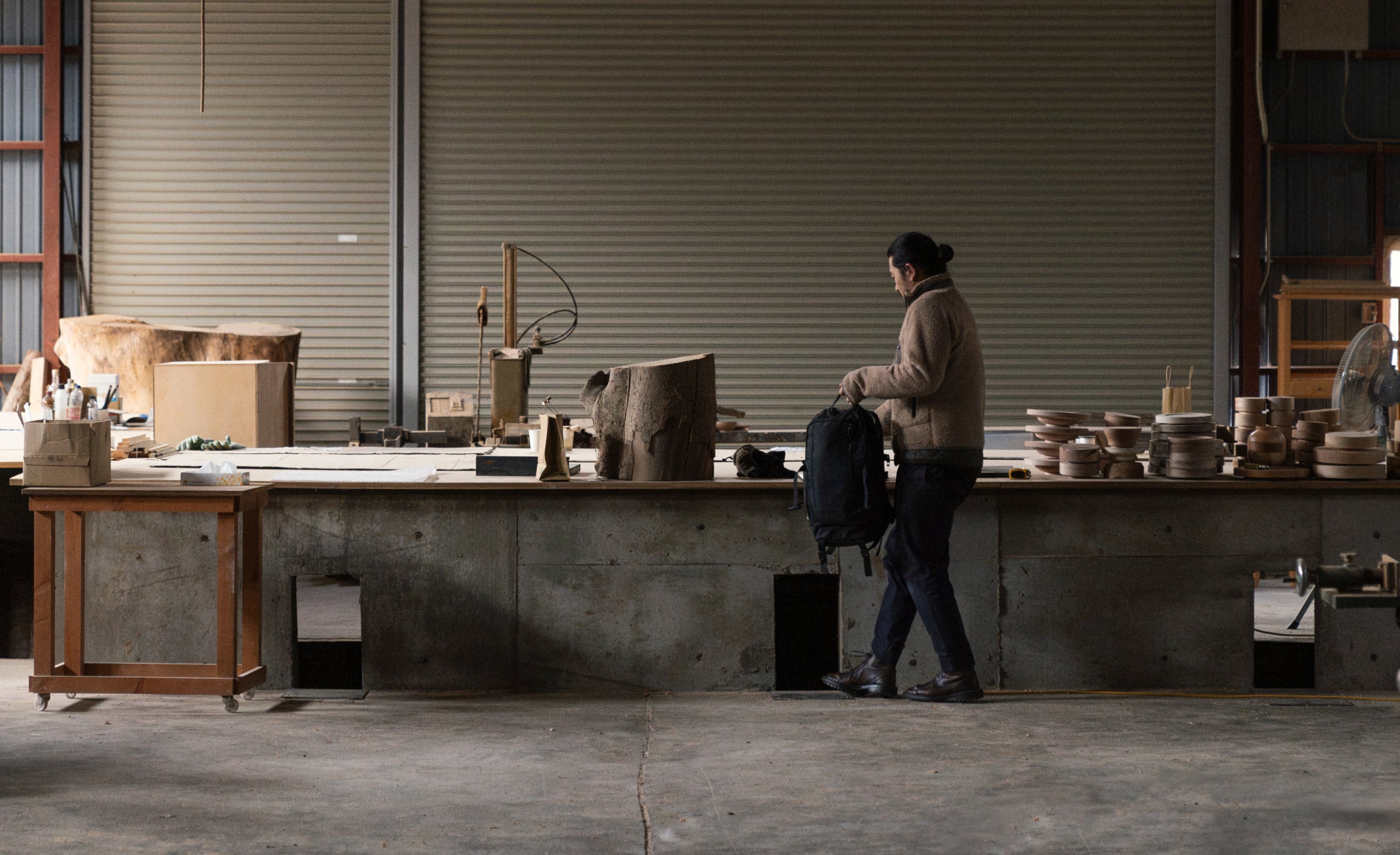Walk through the countless Zen gardens in Kyoto and you’ll quickly identify a universal accessory: stonework. From tōrō towers to water basins, footpaths to bridges, these sculpted ornaments add balance, visual interest, and the physical representation of Buddhist principles in a curated landscape. But not everyone has access to a Japanese garden — or any garden, for that matter.
Seven-generation Nishimura Tōrō-Ten has been handcrafting stoneworks designed for Japanese-style gardens for centuries. Although the pieces are deeply tied to Zen Buddhist symbology and philosophy, Nishimura has been part of the movement that helped bring stone accessories into secular use. They even made forrays into stoneworks designed for the home.
But now, sculptor and stonemason Ishiura Kenji, a part of the Nishimura workshop, has dedicated himself to designing stoneworks that carry the skill and spirit of the pieces you would find in a traditional Zen garden into the home. With this collection, he aims to make Japanese stone sculpture more accessible for modern lifestyles, giving them a chance to be appreciated by a new audience.
HISTORY WRITTEN IN STONE
Both Buddhism and its artistic expressions came to Japan from China by way of Korea in the Asakusa period (552 to 645). The imported style of stoneworks were introduced as implements for Buddhist temples, including the popular tōrō tower, which illuminated the paths to the main temple buildings. The aesthetic of Buddhist-inspired stonework began to develop across the classical era, and even found their way into Shinto shrines by the Heian period (794–1185), but it was in the Kamakura period (1185–1333) where stonework began to flourish. The methods of this era made taller pieces like towers and layered pagodas more resistant to earthquakes, the elements, and age. Pieces from this period have centuries-long survival rates.
Nishimura Tōrō-Ten continues to produce stonework in the style of the Kamakura period, but they also provide repair services to pieces across Japan’s history. From towers from the Nara period in the 700s to contemporary monuments like the Olympic Tower, restoration allows the team at Nishimura to discern the history of each piece, grasp how the technique of construction evolved, and commune with the predecessors of their craft.

CARRYING ON AN AESTHETIC LEGACY
The Nishimura workshop is in its seventh generation. They specialize in carving the stone lanterns, bridges, and stepping stones featured in Japanese gardens. They take great pride in a start-to-finish hand-carved approach, which produces works that integrate better with the natural surroundings. For example, the irregularities in hand-carved stone surfaces allow moss to better adhere to the pieces, creating a harmonious balance between of nature and art. The clinical cuts of machine-made pieces do not allow for this symbiotic aesthetic.
Their artistic pedigree includes collaboration with the renowned 20th-century sculptor, landscape architect, and modernist designer, Isamu Noguchi. Noguchi is famous for his collaboration with Herman-Miller and Charles Eames which resulted in one of the most iconic interior decor movements. During Noguchi’s time in Japan he studied Japanese gardens and was recommended to work with Nishimura because of their stonework. Nishimura became the hands and expertise executing on many of Noguchi’s stone projects for garden works.
Nishimura is part of the legacy of bringing pieces like stone towers to secular use, creating works that are fitted for personal homes and cultural spaces like tea houses. This collection by Ishiura Kenji is the next step in improving the accessibility of traditional Japanese stonework.

A VISION FOR ACCESSIBLE STONEWORK
Ishiura Kenji has been working as a sculptor for Nishimura for 19 years. According to their practice, it takes 3–5 years to learn the basic skills such as carving plain surfaces and shapes, and then 10–15 years to learn the finer techniques for decoration and develop the sense for what gives an object its life and character.
Ishiura finds space for creativity in the way that each stone’s traits mix with its surroundings and eventual aging process. For example, during the carving process, he considers how the stone will look when wet or filled with water. He’ll soften the lines and dull the corners of a piece to give it the feel of something that has been weathered by time.
He began making pieces that are designed for interior spaces after receiving a request from a gallery. He realized that there was an opportunity to reach more people and show them how interesting and multi-faceted stone can be if the pieces are designed to be inside the home instead of outside of it. The vases, incense stands, plates, and bowls of this collection all use the same aesthetic spirit and hand-carved techniques that have been honed at Nishimura for centuries, but with the added functionality of contemporary furnishings.
It is Ishiura’s hope that people who may never have considered stone for their interiors can share in the joy and creative potential he finds in the medium. Even as demand for traditional pieces like tōrō towers decrease, channeling stone-working skill into these new pieces allow for the techniques to live on.

BUT IF YOU DO HAVE A GARDEN YOU'D LIKE TO ACCENTUATE...
If you’re interested in some of Nishimura’s more traditional garden accessories, like tōrō towers, pagodas, tsukubai water bowls, and more, feel free to contact support@pojstudio.com and we can help coordinate with their team to bring you a piece that adds that classic Japanese garden touch to your outdoor landscape.






